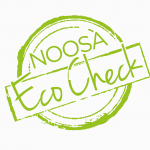Noosa is more than a destination—it’s our home. If we want to protect what we love about living here—our environment, our lifestyle, and our sense of community—we must plan thoughtfully for the future. Doing nothing is not an option.
The draft For the Love of Noosa Destination Management Plan is Council’s invitation to the community to help shape that future. It outlines a shared vision for a thriving Noosa where tourism is well-managed, the environment is protected, and locals come first.
Tourism brings challenges. In recent years, we’ve seen growing pressure on our roads, waste systems, car parks, and open spaces. Our community has voiced legitimate concerns: congestion, overcrowding, rising costs of living, too many events, and too many short stays.
Yet tourism is also a cornerstone of our economy. It supports one in every seven jobs—more than 3,000 people across the Shire. It contributes around a third of Noosa’s Gross Regional Product and underpins many of the services, amenities, and small businesses locals rely on.
In every street, you’ll find someone whose livelihood is linked to tourism—whether they’re serving in cafés, maintaining accommodation, running tours, working in trades, or selling in shops. Our economy and visitor experience are deeply interconnected.
When managed well, tourism can be a positive force. It creates opportunity, supports families, and allows us to invest in preserving what makes Noosa special. But it must be sustainable. It must support Noosa—never compromise it.
This plan isn’t about turning visitors away. It’s about creating a better experience for everyone—one that’s respectful, balanced, and future-focused.
During Phase 1 consultation, over 1,000 residents took the time to make submissions or complete surveys, contributing more than 1,300 hours of feedback. That level of engagement shows just how deeply people care about this place.
What this shows is that the best ideas don’t always come from reports or expert panels. They come from the people who live here. The ones who know the tides, walk the trails, run the small businesses, teach our kids, and volunteer their time. When we let locals lead, we get better outcomes.
The draft plan puts forward a mix of practical steps and bold ideas—some you might support, others you might question. Things like a visitor contribution model, a Surf Management Plan, seasonal pauses, a local custodian program, better transport options, and a clear focus on protecting what matters most to our community.
And some of these ideas need further exploration and clearer answers. Take paid parking. It’s not just about whether you support it or not. We need to ask: Will residents be exempt? What’s the actual cost to implement it? How many meters? How often are we truly congested? Will it work—or shift the problem?
Or a congestion levy—what is the goal? Will it achieve what we want? What are the consequences? Will it support sustainable visitation or damage Noosa’s brand?
These are real, serious questions. And what matters is that we ask them—transparently, based on evidence, and with the community.
To make this plan truly successful, we need clarity, transparency, and accountability.
How will Council measure progress on the community’s top priorities—like traffic, environmental protection, and housing affordability—and ensure those issues are addressed meaningfully?
How will broad success measures—like “improved community sentiment” or “regenerative visitor experiences”—be defined clearly and measured objectively? What are the baseline data points, the targets, the timeframes?
What does “managed access” to public beaches and parks actually mean in practice? How will Council ensure any new restrictions—particularly on river use—don’t unfairly limit community access or erode local rights?
Will the community be provided with costings, impact studies, and financial transparency, so we can make informed choices about proposed actions?
Will we have a clear, robust KPI framework—so we can track progress, assess results, and hold ourselves to account?
And finally: how will we ensure the community is not only consulted broadly, but also invited to help shape the specifics—not just the vision?
The good news is: we’re not finished. We’re entering Phase 2 consultation. Staff have made it clear that while early success measures have been identified, further community input will help shape how we measure and monitor what matters most.
So I urge you: read the draft plan. Ask the hard questions.
Tell us what we’ve got right—and what we haven’t.
Tell us what’s missing. What matters. What needs to change.
This is our chance to build a future where tourism supports—not competes with—our environment, our lifestyle, and our values.
Where visitors are welcome, but never at the expense of locals.
Where our legacy to future generations isn’t a problem to fix—but a home to love.
(This article reflects my personal views and does not represent the official position of Noosa Council.)







